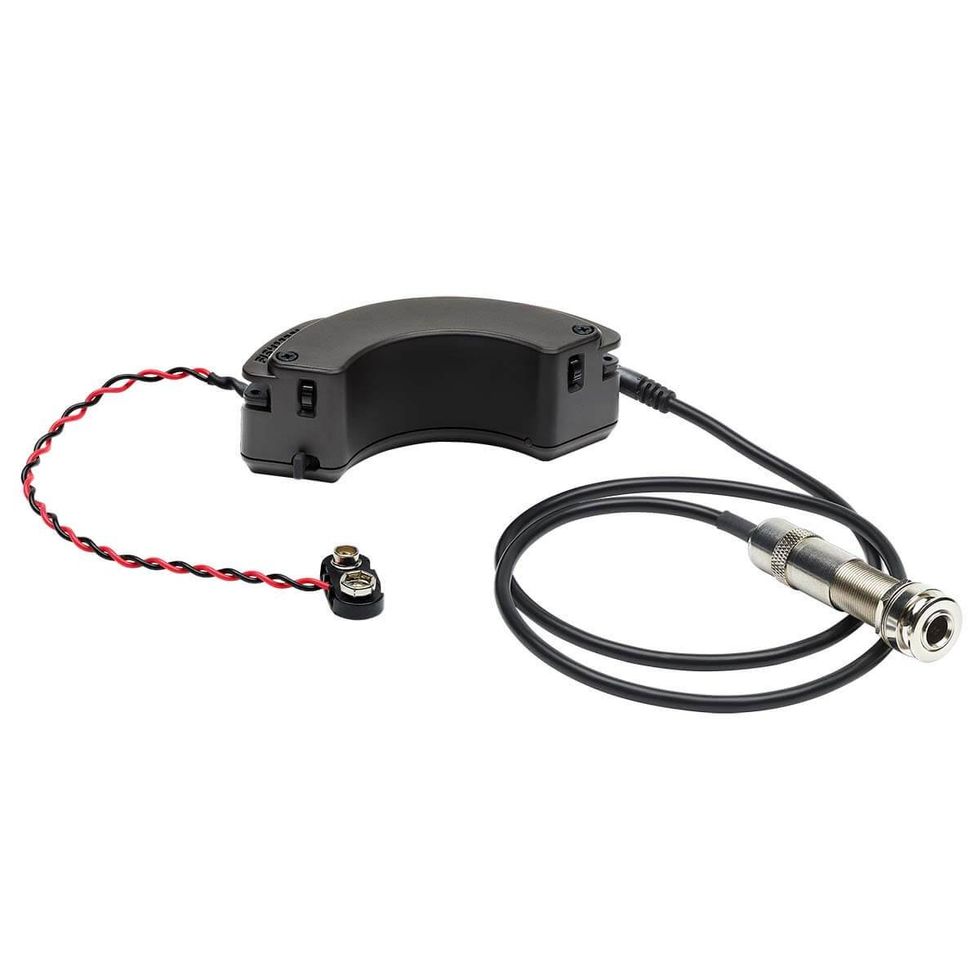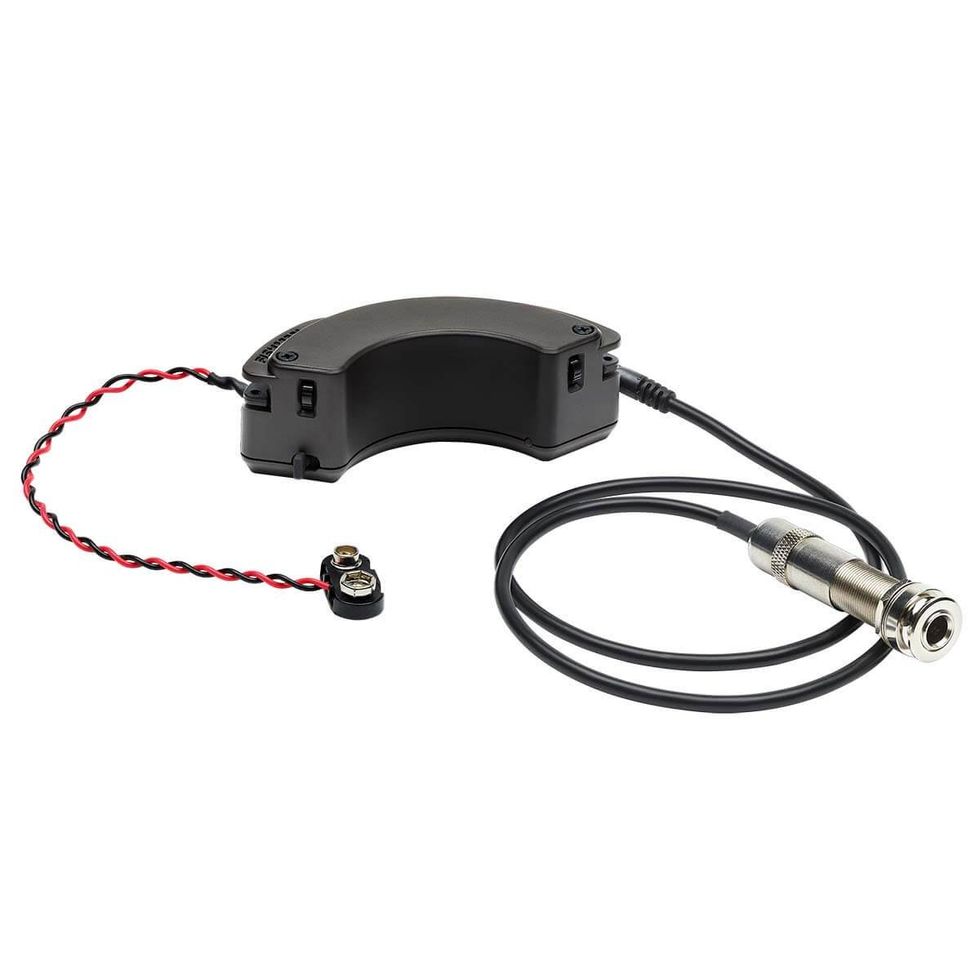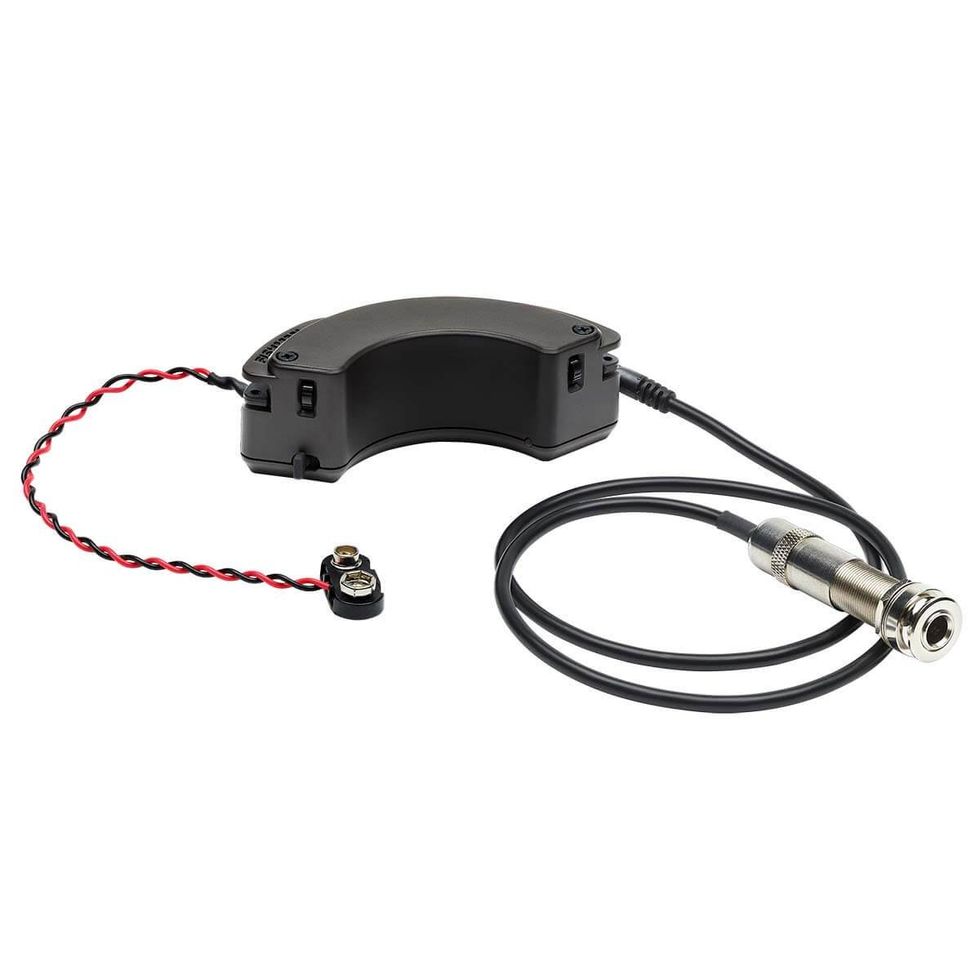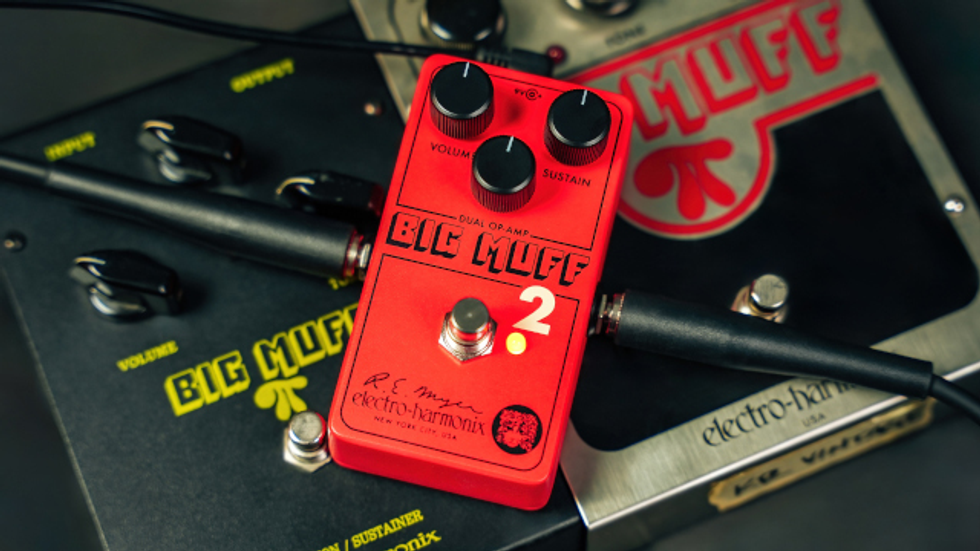The technology behind a tube-powered distortion/overdrive/preamp pedal is not new, but ideas about how to optimize it for guitar-playing tone hounds have begun to take some unexpected twists and turns. The HT series of “pure valve distortion” pedals from the UK’s Blackstar Amplification offers a number of new twists on the basic idea. Among them are a dual valve, true high voltage circuit, a unique tone shaping feature, and an additional, speaker emulated output.
Presumably, the HT-Dual is so named because it has two footswitchable channels rather than one, like the rest of the HT series, making it somewhat more versatile. In reality, it’s effectively a 3-channel preamp, since channel 1 offers an additional clean/crunch option. This option is not footswitchable, so if you’re going to use the HT-Dual on your pedalboard, you’ll have to settle for two out of three (but that ain’t bad). You can set it to “clean” and use channel 1 as a boost for more volume or to push a tube amp into overdrive, or you can set it to “crunch” for a lower gain distortion flavor than channel 2.
As with all of the pedals in the HT series, Dual’s twin valve preamp design comes from Blackstar’s idea is that using two cascaded ECC83 (12AX7) triode stages for gain instead of one, and running the tubes at appropriate amp voltages (300V) instead of ‘starving’ them, will give the preamp pedal the same touch sensitivity and playing dynamics that you get when you plug straight into an all tube amp. I have to say that it doesn’t. I don’t mean that it’s not good, just that it’s not the same. The hybrid amps I’ve played smoke the solid-state modeling gear when it comes to achieving real tube amp feeling, but pedals still seem a bit further behind. So, while I haven’t played them all, I generally suspect such claims of being slightly exaggerated.
Tone-wise it’s not much of a shortfall. Both of the HT-Dual’s overdrive channels have really great grind, and rich, “tubey” harmonic distortion. They don’t have exactly the same glassy-smooth compression, and they don’t bark the same way a tube amp does. Even though it sounds very close – and this makes the HT-Dual a real contender in my mind – it doesn’t feel exactly the same, and that affects the way I play. I know that other manufacturers of similar devices have made similar claims about different designs, and while I’m sure that somewhere right now a fierce controversy rages over which method best brings real tube texture to life, I have to believe a discussion of something as subjective as tone should always recognize that different players want different things. And what the HT-Dual lacks in dynamic sensitivity, it seems to make up for in the tonal quality of its distortion and the precision of its tone shaping.
| Take a Listen Download the following clips to hear variations of what the Blackstar HT Dual has to offer Download Clip 1*: (564KB) Pedal Off (for reference), Channel 1 Clean, gain at noon (acting as a boost), first ISF "UK" voicing, then "US"voicing Download Clip 2*: (564KB) Channel 1 Crunch, gain at 9 O''clock, first ISF "UK" voicing, then "US" voicing Download Clip 3*: (567KB) Channel 2, gain at 8 O''clock, first "UK" voicing, then "US" voicing Download Clip 4**: (1.95MB) Multi-track demo made entirely with softer HT Dual voicings |
The new twist there is Blackstar’s patent-applied-for “Infinite Shape Feature,” or ISF, tone contour. The name seems somewhat rhetorical, but the feature sure is “cracking,” as they say: it allows you to dial in the precise tonal characteristics you want from a range of possibilities, expressed as the distance between classic American and British voicings. Though the ISF is, as I suspected, not literally infinite, it is quite good at giving your tone a particular color. The UK side of the control knob (turned fully CW) is much more genuinely convincing than the US side (fully CCW); set this way, channel 1 produced an outstanding Marshall-like sound – crisp top end, woody mids, and tight crunch; channel 2 had much more gain, but still retained all the harmonic subtlety and nuance of a dimed Vox – a huge treat for anybody who’s as taken as I am by Queen’s early recordings.
The American setting of the ISF is said to have vintage Fender/Boogie type of sound. It is as aggressive as they say, but the mids sounded more open rather than fat to me. It’s a wonderful sound, but not as instantly recognizable as the UK voicing.
The HT-Dual also features silent switching and a High Integrity buffered bypass, which is good news if you’re pushing a lot of cable, but also means it’s gotta have power if it’s in your signal chain (16V AC). Like the other members of the HT series, the Dual provides an additional speaker emulated output, if you want to go directly into your DAW. This is a useful feature, and it does make a difference.
Physically, the HT-Dual is a top quality unit: nice looking, sturdy, and substantial. Also, the orange glow emanating from the valve window is a nice touch (even though it’s really an LED). I do have to mention the knob markings, though, which are just small dents at the edges of the polished knob tops. It’s difficult to read the settings from six feet away in bright daylight; it’s almost impossible to read them in the dark – which could be a problem if you’re going to play out with it.
All in all, I’d say the guys at Blackstar Amplification are turning some fresh ideas into impressively effective gear at some very agreeable prices. The HT-Dual deserves the praise it’s been receiving, and it would be an excellent way to add some classic vintage flavors to your tonal range without having to shell out a lot, or reinvent your rig.
*Note: These clips were played on a Deusenberg Mike Campbell Signature guitar using the bridge humbucker pickup and the HT-Dual''s speaker emulated output into a MacBook Pro using Line 6''s TonePort GX (GearBox 3.1, Fender ''58 Bassman amp model and Line 6 2x12 cab model). Recorded with RiffWorks Standard.
**Note: This clip involves multiple tracks played on a Standard Strat with noiseless pickups and just a hair of ''verb from a Harmonix Holier Grail. Recorded with at Fostex MR-16. This clip provided by Mike Mueller.
Buy if...
you want convincing vintage distortion tones with no hassle and no second mortgage
Skip if...
you''re trying to find a cheap way to acquire a tube amp
Rating...
MSRP $299 - Blackstar Amplification - blackstaramps.co.uk |









![Rig Rundown: Russian Circles’ Mike Sullivan [2025]](https://www.premierguitar.com/media-library/youtube.jpg?id=62303631&width=1245&height=700&quality=70&coordinates=0%2C0%2C0%2C0)















